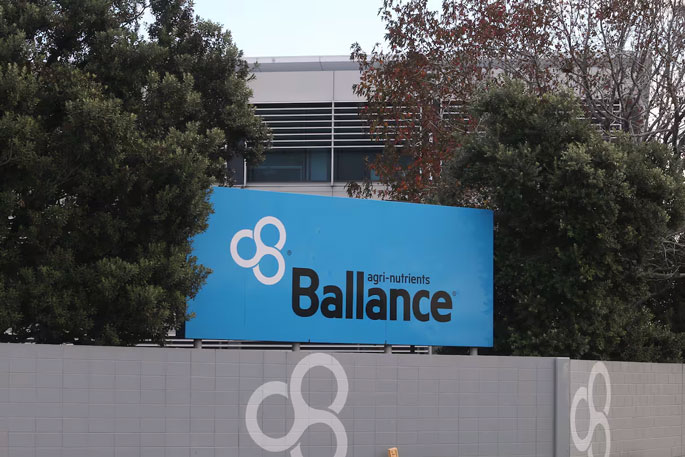A fertiliser company has been convicted after a worker died after being crushed in a conveyor belt accident in Mount Maunganui.
The company had conflicting safety information and had earlier been told about “non-compliant guarding” and “entanglement” risks around the belt system, court documents show.
Ballance Agri-Nutrients Limited has pleaded guilty in the Tauranga District Court of a charge of failing to ensure, so far as reasonably practicable, the health and safety of workers, exposing them to the risk of death or serious injury from moving conveyor belts.
WorkSafe New Zealand laid the charge under the Health and Safety at Work Act 2015 after a worker, who cannot be named, died at the company’s Mount Maunganui factory on July 27 last year.
The company makes superphosphate fertiliser – the most commonly used in farming in New Zealand – from its Hewletts Rd plant adjacent to the Port of Tauranga.
Ballance admitted failures in training and compliance monitoring for cleaning and maintenance of the conveyor system, and in ensuring that it was fitted with effective guarding and emergency stop services.
The maximum penalty for the charge is a $1.5 million fine.
In court on Friday, Brett Harris, lawyer for Ballance Agri-Nurients, told Judge Bill Lawson the company and the victim’s family were willing to participate in a restorative justice meeting.
Judge Lawson convicted the company and remanded the matter for a restorative justice meeting report and sentencing on December 17.
Lawyer Genevieve Denize, representing the victim’s family, successfully sought interim suppression of his name and where he lived on hardship grounds, unopposed by WorkSafe.
 A hopper called a Johnson mounted on the railway tracks that run parallel to the conveyor belt system in the factory. Photo / WorkSafe NZ.
A hopper called a Johnson mounted on the railway tracks that run parallel to the conveyor belt system in the factory. Photo / WorkSafe NZ.
WorkSafe’s summary of facts released to the Bay of Plenty Times showed the fatal accident involved a horizontal conveyor belt system used to transport the fertiliser product down the production line.
The summary said six 600mm-wide conveyor belts ran parallel to two sets of rail tracks. Large hoppers – called Johnsons – mounted on the tracks funnelled the product onto the belt system. The belts ran at a speed of 1.7 metres per second.
A 2022 safety risk assessment found “non-compliant guarding”, “rotating elements” hazards and a risk of “entanglement” from working around the belts.
On the day of the 2023 accident, the victim and five other workers were cleaning under the conveyor belts and removing the debris via a running belt.
The summary said the victim lost his footing trying to step over the running belt and fell. He rolled several times and was dragged underneath the metal frame of a crossing conveyor belt.
A worker yelled “Crash 4, Crash 4″, to signal an emergency stop of all machines, and another worker ran over and hit the emergency stop button.
There was a delay in the button being pushed and the conveyor belt coming to a halt. A witness said it was moving too fast and could not stop in time.
A colleague held the victim’s head and body in an attempt to stop him from being dragged any further, and St John Ambulance and the fire service were called.
The colleague continued to reassure the victim, who was trapped for about six minutes before an ambulance arrived.
The victim died from his injuries.
 The victim fell while stepping over the middle conveyor belt. Photo / WorkSafe NZ.
The victim fell while stepping over the middle conveyor belt. Photo / WorkSafe NZ.
The summary said the safety risk that eventuated was the victim being “drawn into an in-running nip point and crushed” from working near a moving conveyor.
The most likely cause of death was traumatic asphyxia.
WorkSafe was alerted by police and visited the accident site that day.
An external mechanical engineering expert later examined the scene and tested the conveyor belt system.
His October 23 report found the machine guarding of the conveyor infeed systems was “generally not in compliance” with standard requirements and WorkSafe best practice guidelines.
He found the emergency stop switches were 20.75m to the right and 12.82m to the left of the accident site, and required a worker to go around a large hopper.
On July 31, 2023, WorkSafe issued Ballance a prohibition notice requiring improvements to the conveyor belt system. This was lifted on January 24 after significant extra guarding was installed.
WorkSafe’s summary said at the time of the accident, Ballance’s standard operating procedures and policies for cleaning the conveyor belts did not warn or instruct against stepping over an energised conveyor belt.
Other workers reported climbing over running conveyor belts was normal.
There was also an “inconsistency” in the procedures where it required the conveyor to be “de-energised” while working near it but also allowed it to be running to perform some cleaning tasks with workers nearby.
In another conflict, the hazard register banned cleaning within 1m of any moving conveyor without isolating the plant, even though the clearances between the belts were all under 1m.
WorkSafe’s summary said Ballance’s failure to ensure the health and safety of the victim also exposed other workers to the same risk.



0 comments
Leave a Comment
You must be logged in to make a comment.